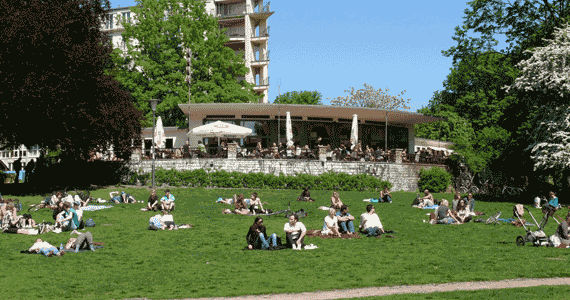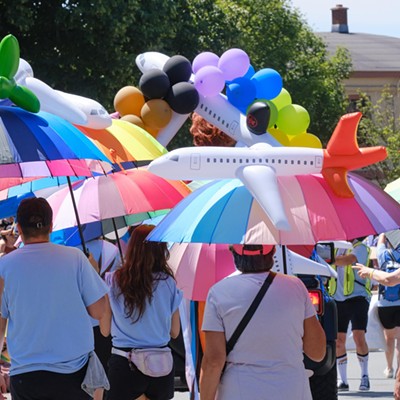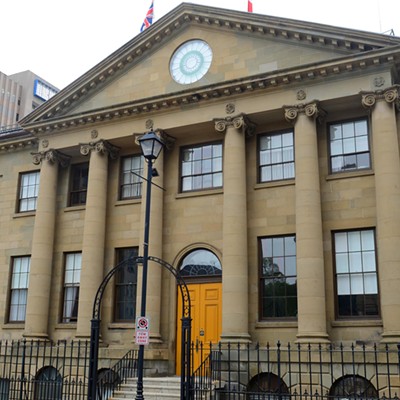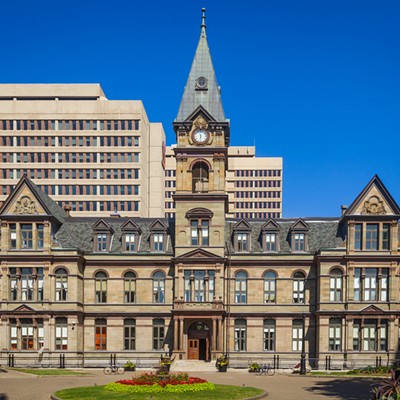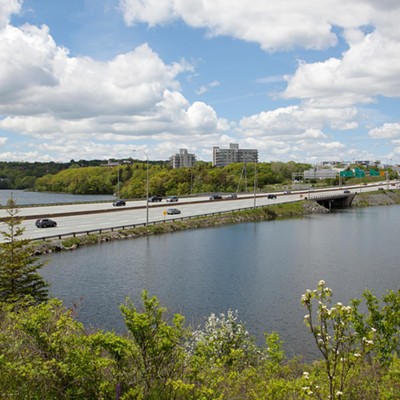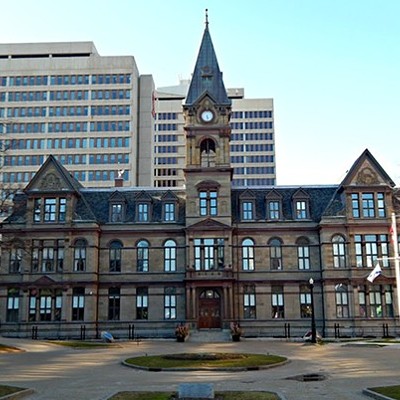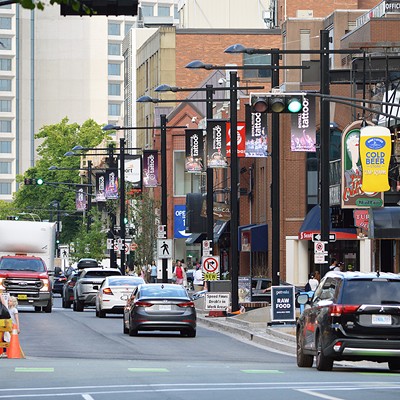In Dartmouth rises a bluff that provides a spectacular view of the Halifax Harbour. To the south you see Georges Island, McNabs Island and, on a clear day, even the lighthouse on Devils Island, at the harbour entrance. Turning northward, you'll see the towers of downtown Halifax, then a perfect view of the Macdonald Bridge and onward to the shipyard and into the Bedford Basin.
The bluff is in what is called the Dartmouth Common. I live nearby. The Common is one block north of the Alderney ferry terminal and just south, across the street, from the new Bridge Terminal. Every day, tens of thousands commuters pass nearby, but it is a lonely place. The Common serves as an off-leash park, so especially in the morning I'll see a handful of dog walkers. On weekends I'll sometimes find a baseball or softball game on the single diamond, back behind Bicentennial School. At the bluff's edge, there's a tiny gazebo, a perfect place for lighting up a joint while contemplating the view, and a few friendly people use it for just that purpose. But otherwise the Common is mostly avoided, shunned even, even by the people who live nearby, even by me.
And for good reason: The Dartmouth Common is a downright dangerous place. The paths are nice shortcuts between the transit terminals and my "flower streets" neighbourhood just up from downtown Dartmouth, but there are so few people using the paths that safety is compromised. Judging by police reports, someone is mugged on the Dartmouth Common about once a month. Probably many more attacks go unreported. In fact, when the new Bridge Terminal was being designed, the all-male planning team was talking of removing Thistle Street between the terminal and Victoria Road and returning it to park use, but at a public consultation that idea was nixed by women who pointed out that the traffic on the street provided the only safety while walking home late at night. It's the same for me. When I take the ferry home from work, I sometimes cut through the Common, but never if it's dark---I take the long way around, on the roads, under the streetlights.
There used to be safety concerns on the Halifax Common, too, but that problem has been solved, at least in winter, thanks to The Oval. It's clear that what makes a park safe is people using it, providing a critical mass of eyes and ears looking out for each other.
I've long wondered how we could reach that critical mass of safety on the Dartmouth Common, and I found the answer last year when I visited Germany. In the former East Berlin, in a working class neighbourhood, is something called the Volkspark am Weinbergsweg, a park that had only recently been reclaimed from drug dealers. Now, the park is amazing, with a wonderful playground for children, some sports fields, a small treed area with benches and outfitted for chess and table tennis, as well as a sprawling lawn, seemingly permanently dotted with picnickers. I visited the park both in the daytime and at night---it was always crowded.
The secret to the success of Weinberg Park is a small building, a cafe, built into the hillside. A stone porch extends from the front of the building, out over the lawn, and holds maybe 30 tables. People in the neighbourhood come by for a light dinner and drinks. I had some nice locally brewed beer. Some couples purchase a bottle of wine and bring it out to the lawn for their picnic. The cafe provides the critical mass that makes the park safe, and so the park is a success.
Imagine such a cafe built atop the bluff in the Dartmouth Common, with outdoor seating overlooking the harbour. Commuters would walk up from the ferry or over from the Bridge Terminal, for a respite on their way home. People in my neighbourhood would stroll over at night, for a glass of wine under the stars, looking at the lights of Halifax. And the Dartmouth Common would be safe. It would be used. It would be a decent urban park.
But, alas, we have an absurd view of parks in Halifax. With some few exceptions, vending is frowned upon, and alcohol is flat-out illegal. Moreover, we paint all parks with the same expectation: as green wildernesses first. People fit in only so far as the green wilderness is maintained. I don't want to change Shubie Park or Point Pleasant Park, and certainly not the true wilderness parks in the making, but this would be a much better city if we changed the way we interact with our urban green spaces, and brought people and green together.
I raised this issue with Peter Bigelow, the city manager of real property, and whose job is to figure out what we're going to do with parks.
"We agree with you," he says. "Our parks should be better utilized.There's an opportunity to have them better programmed, so that they are more intensely used.
"Getting people onto those streets is an objective," continues Bigelow. "Getting people into those parks is an objective. So what we're trying to figure out is how to create a better, more social environment. And that's what you're articulating---vending is one of the ways that you do that. But in every place, it's not the right prescription."
In these pages we have a look at the social role of parks in the urban core, what works, what doesn't work and how we can do better. —Tim Bousquet

